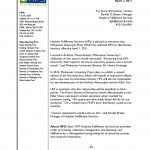I thought zombies were interested in eating brains, not improving them, before I read “Using the Living Dead To Teach Information Literacy” at Library Journal.com.
Students arrive on the McPherson College campus chronically unprepared to use the library. The director of library services and his assistant, an experienced illustrator for small press comics, hope that students will read their new 23-page library guide in graphic novel format — Library of the Living Dead – and no longer have to spend so much time answering the same basic questions.
[The guide] features students taking cover in the library from zombies run amok on campus, and the flight to safety becomes a point of departure for a blood-stained lesson, replete with decapitations, in the Dewey Decimal system and other library tools….
[The] story line… includes a desperate flight through the stacks during which the characters, who are modeled on real students and staff members, incinerate zombies while simultaneously doing research (Zombies in Haitian myth? “Religion…the 200s. Follow me.”)
I asked Michael Walsh, who sent me the story, what’s in it for the zombies?
“Maybe this will help them get smarter brains to munch on,” he guessed.
[Thanks to Michael J. Walsh for the story.]




